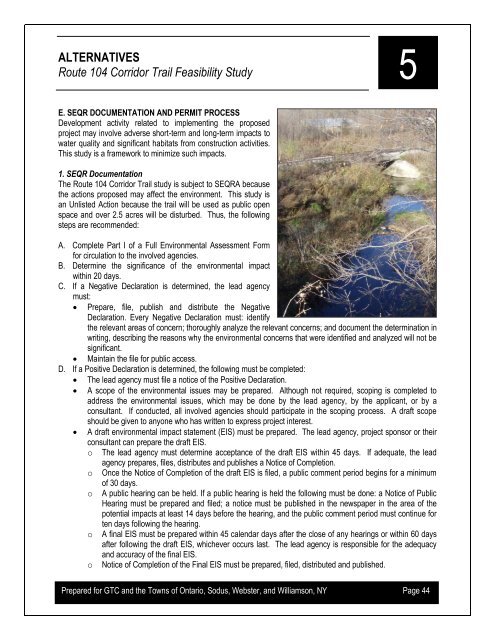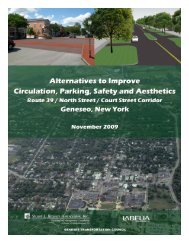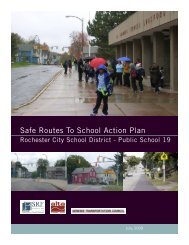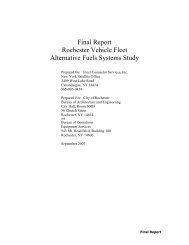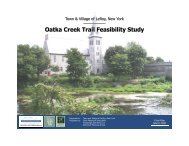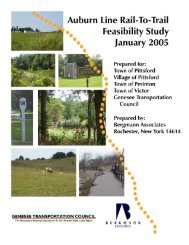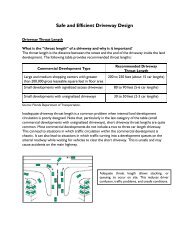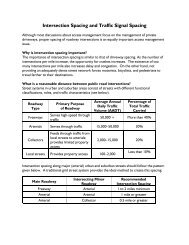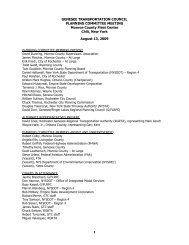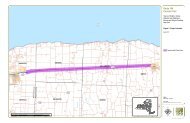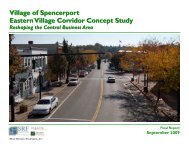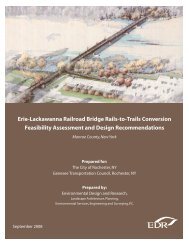Route 104 Corridor Trail Feasibility Study - Genesee Transportation ...
Route 104 Corridor Trail Feasibility Study - Genesee Transportation ...
Route 104 Corridor Trail Feasibility Study - Genesee Transportation ...
Create successful ePaper yourself
Turn your PDF publications into a flip-book with our unique Google optimized e-Paper software.
ALTERNATIVES<br />
5<br />
<strong>Route</strong> <strong>104</strong> <strong>Corridor</strong> <strong>Trail</strong> <strong>Feasibility</strong> <strong>Study</strong><br />
E. SEQR DOCUMENTATION AND PERMIT PROCESS<br />
Development activity related to implementing the proposed<br />
project may involve adverse short-term and long-term impacts to<br />
water quality and significant habitats from construction activities.<br />
This study is a framework to minimize such impacts.<br />
1. SEQR Documentation<br />
The <strong>Route</strong> <strong>104</strong> <strong>Corridor</strong> <strong>Trail</strong> study is subject to SEQRA because<br />
the actions proposed may affect the environment. This study is<br />
an Unlisted Action because the trail will be used as public open<br />
space and over 2.5 acres will be disturbed. Thus, the following<br />
steps are recommended:<br />
A. Complete Part I of a Full Environmental Assessment Form<br />
for circulation to the involved agencies.<br />
B. Determine the significance of the environmental impact<br />
within 20 days.<br />
C. If a Negative Declaration is determined, the lead agency<br />
must:<br />
Prepare, file, publish and distribute the Negative<br />
Declaration. Every Negative Declaration must: identify<br />
the relevant areas of concern; thoroughly analyze the relevant concerns; and document the determination in<br />
writing, describing the reasons why the environmental concerns that were identified and analyzed will not be<br />
significant.<br />
Maintain the file for public access.<br />
D. If a Positive Declaration is determined, the following must be completed:<br />
<br />
<br />
<br />
The lead agency must file a notice of the Positive Declaration.<br />
A scope of the environmental issues may be prepared. Although not required, scoping is completed to<br />
address the environmental issues, which may be done by the lead agency, by the applicant, or by a<br />
consultant. If conducted, all involved agencies should participate in the scoping process. A draft scope<br />
should be given to anyone who has written to express project interest.<br />
A draft environmental impact statement (EIS) must be prepared. The lead agency, project sponsor or their<br />
consultant can prepare the draft EIS.<br />
o The lead agency must determine acceptance of the draft EIS within 45 days. If adequate, the lead<br />
agency prepares, files, distributes and publishes a Notice of Completion.<br />
o Once the Notice of Completion of the draft EIS is filed, a public comment period begins for a minimum<br />
of 30 days.<br />
o A public hearing can be held. If a public hearing is held the following must be done: a Notice of Public<br />
Hearing must be prepared and filed; a notice must be published in the newspaper in the area of the<br />
potential impacts at least 14 days before the hearing, and the public comment period must continue for<br />
ten days following the hearing.<br />
o<br />
o<br />
A final EIS must be prepared within 45 calendar days after the close of any hearings or within 60 days<br />
after following the draft EIS, whichever occurs last. The lead agency is responsible for the adequacy<br />
and accuracy of the final EIS.<br />
Notice of Completion of the Final EIS must be prepared, filed, distributed and published.<br />
Prepared for GTC and the Towns of Ontario, Sodus, Webster, and Williamson, NY Page 44


